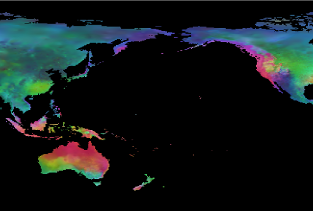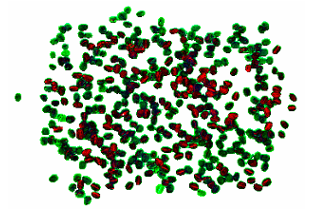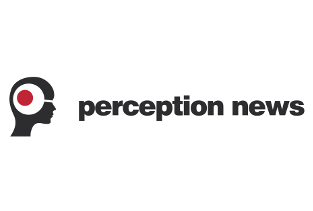
Today there is a high penetration of imaging technology in industry and real-world environments. Industrial machine vision, systems to observe persons and infrastructure, or simply highly portable image and video capturing devices in mobile phones or cars are only some examples.
On the one hand, the more visual information is captured and has to be observed, the more need for automatic processing emerges. On the other hand, despite the great advances of the last decade, computer vision tasks still lack of general applicability and robustness in complex scenarios. And still, the human cognition and learning ability is hard to compete for machine learning systems in flexible and complex environments. The result is a big gap between customer needs or unsolved challenges and technological availability, showing the high market potential for Vision+ research.
Vision+ is dedicated to narrow this gap by research activities focussing on integrating vision systems with additional knowledge from multi-modal sensors, spatio-temporal investigations, but also humans. Vision systems with humans in the loop (e.g. for providing limited training information) might on the one hand decrease autonomy but on the other hand provide increased robustness. In addition, the human might provide high-level model knowledge that can ease (e.g. reduce the number of samples) the training process. Research on modular vision system architectures guarantees to be flexible regarding exploitation of modern hardware platforms (i.e. GPGPU , multi-core, or mobile computing). The research on computer vision methods is complemented by measures specifically targeting the applicability in real-world scenarios, such as testing, sustainability and the emphasis on standards.
The consortium incorporates fundamental computer vision competences from academic and applied research groups. Highly innovative industry partners complete the consortium with their application oriented expertise.
At the end of Vision+ solutions for many of the currently unsolved challenges are expected. The results will definitely constitute a step towards zero-defect product quality assurance but also increase detection rate for object appearance and identification. More reliable vision systems will open the market for completely new applications. Besides, a lot of solutions will finally be developed, while computer vision research will still be confronted with most challenging topics even beyond the period of Vision+.
This K-Project Vision+ is funded in the context of COMET – Competence Centers for Excellent Technologies by BMVIT, BMWFJ, Styrian Business Promotion Agency (SFG), Vienna Business Agency, Province of Styria – Government of Styria. The programme COMET is conducted by Austrian Research Promotion Agency (FFG).
![]()
Project: ROIs for hyperspectral analysis
This industrial implementation investigates, implements and validates automated methods to object-oriented detection of regions-of-interests (ROI) in hyper-spectral data by applying image processing to multiple feature images.

Three channel hyper-spectral feature image (normalized 1st derivative) of coffee beans („Healthy“ and „Immature“ mixed).
Usually, hyper-spectral data associated with an image is based on selective measurements from one (or only a small number of) image pixels.

Information of „Healthy“ and „Immature“ groups after application of „normalized intensity“ pre-processing. Manually selected spectra (each plot is associated with one specific pixel location in the image domain) for the coffee beans classification.
With the help of image processing in the local projection domain of hyper-spectral data (feature images) a selection of ROIs is derived for further processing in the hyper-spectral domain. Subsequently, the ROIs are used to select the most interesting spectra from the acquired hyper-spectral data. The algorithms have to be invariant to influences that are inherent to the hyper-spectral imaging process (e.g. motion blur, environmental conditions like temperature and humidity).
The information content of hyper-spectral data is abstracted by features per pixel (i.e. per spectrum) by means of statistical or chemometric (multivariate) analysis. For the segmentation analysis 40 feature channels of the coffee beans data set served as basis for two different approaches to automated segmentation:
- ROI detection by morphological processing: Since each individual channel is affected by noise due to change in lighting conditions or environmental parameters, the general approach to automated segmentation is based on a three step principle: a) adaptive thresholding to identify fore- and background, b) separation and identification of individual objects (i.e. coffee beans) by means of morphological analysis which can be followed by c) a region growing step to deliver masks for the beans objects.
|
|
|
- Watershed analysis: The first step in automated segmentation based on watershed analysis was the automatic selection of the feature channel having the highest contrast (highest standard deviation in pixel values), which was the feature channel of the 2nd derivative for the coffee beans data. Similar to the first approach, an initial binarization is the basis for the following steps. On this binary mask a distance transform is applied which then delivers local maxima by an iterative search method. The local maxima are used as “seeds” for watershed regions. Combining the watershed regions with the binary mask delivers the desired beans ROIs.
|
|
![]()
Project Partners
 | JOANNEUM RESEARCH Forschungsgesellschaft mbH
|
 | AIT Austrian Institute of Technology GmbH
|
 | Graz University of Technology
|
 | VRVis Zentrum für Virtual Reality und Visualisierung Forschungs-GmbH
|
Alicona Imaging GmbH
| |
 | Böhler Edelstahl GmbH & Co KG
|
 | DIBIT Messtechnik GmbH
|
 | eMedia Monitor GmbH
|
 | NextSense Mess- und Prüfsysteme GmbH
|
 | Perception Park GmbH
|
 | redPuls IT & Security Solutions GmbH
|
 | voestalpine Austria Draht GmbH
|
 | Weitzer Holding GmbH Klammstrasse 24a A-8160 Weiz http://www.weitzer-parkett.com |












